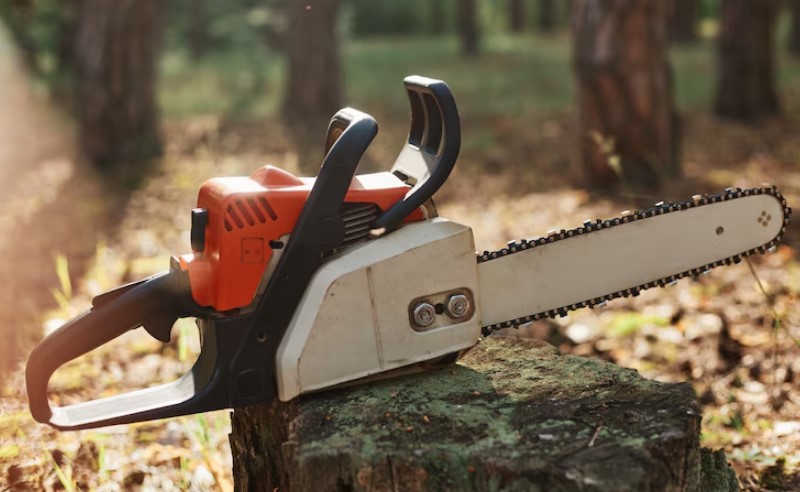Maintaining a sharp chainsaw chain is essential for ensuring efficient cutting, enhancing safety, and extending the lifespan of your equipment. A well-maintained chain improves cutting performance, reduces the risk of kickback, and minimizes operator fatigue. This guide provides step-by-step instructions on how to file your chainsaw chain precisely, ensuring smoother operation and safer handling.
Essential Tools and Materials
Before beginning the maintenance process, gathering all necessary tools and materials is crucial. You will need a chainsaw file and file guide to maintain the correct angle and smoothness of the chain. A depth gauge tool will help measure and adjust the height of the depth gauges, while a round file and flat file are used for filing the cutting teeth and depth gauges, respectively. A file holder or guide ensures consistency in angle and depth. Safety gear, including gloves, goggles, and hearing protection, is essential to safeguard yourself during maintenance. Additionally, having a workbench or sturdy table, a vice or chain clamp to secure the chain, and a clean cloth or brush for cleaning is important for an efficient workflow. Finally, chain lubricant is necessary to keep the chain running smoothly.
Understanding Your Chainsaw Chain
To properly maintain your chainsaw chain, it is important to understand its components. The chain consists of cutters, which are the sharp teeth responsible for cutting, depth gauges (or rakers) that control the depth of the cut, and drive links that connect the chain to the saw’s drive sprocket. Chains come in different types, such as low-profile chains for smaller saws and light-duty work, full chisel chains for aggressive cutting in clean wood, and semi-chisel chains for handling dirty or frozen wood.
Understanding chain pitch and gauge is also crucial, as these specifications determine the appropriate file size. For instance, a 3/8 .043 chain typically requires a 5/32″ round file. For more details on selecting the correct file size for your chain, check out this guide on What Size File for 3/8 .043 Chain.
Preparation
Proper preparation ensures an effective and safe filing process. Follow these steps:
-
Safely Remove the Chainsaw Chain: For electric chainsaws, turn off and unplug the device. For gas models, remove the spark plug to prevent accidental starts. Loosen the bar nuts and carefully remove the chain and bar from the saw.
-
Clean the Chain Thoroughly: Use a clean cloth or brush to remove any debris, sawdust, or residue from the chain. A clean chain is easier to work on and ensures better results.
-
Set Up Your Workspace: Choose a well-lit area to work on your chain. A clean and organized workspace will make the process smoother and safer.
-
Secure the Chain: Place the chain on a sturdy workbench or table. Use a vice or chain clamp to hold the chain firmly in place, preventing any movement during filing
Filing Process
Filing Cutting Teeth
Start by identifying the shortest cutter on the chain, which will serve as your reference point for uniformity. Use a file guide to maintain the correct angle, typically between 30° and 35°. Hold the file at a 90-degree angle to the bar and apply smooth, even strokes, pushing away from you. Ensure you use the same number of strokes for each tooth to maintain consistency across the chain. File all the teeth on one side of the chain before flipping it to file the other side, ensuring an even sharpening process.
Adjusting Depth Gauges
Once the cutting teeth are filed, it’s time to adjust the depth gauges. Use a depth gauge tool to measure the height of the depth gauges, ensuring they are approximately 0.025 inches (0.64 mm) lower than the cutting teeth. File the depth gauges with a flat file to achieve the recommended height while maintaining their original profile. Proper adjustment of depth gauges is crucial for consistent cutting performance.
Reassembly and Testing
After filing, reattach the chain to the saw, ensuring it is properly aligned. Adjust the chain tension according to the manufacturer’s specifications to prevent excessive slack or tightness. Lubricate the chain to ensure smooth operation and perform safety checks before using the chainsaw. Verify that the chain is secure and properly aligned to avoid any operational issues.
Maintenance Tips
Regular maintenance of your chainsaw chain is important for optimal performance. File the chain after every fuel tank or whenever you notice a decrease in cutting efficiency. For severe damage, consider seeking professional sharpening services. Store the chainsaw in a dry, clean environment to prevent rust and damage. Regularly clean and lubricate the chain and bar, and replace the chain when the cutters are worn down to less than 4mm.
Troubleshooting Common Issues
If you encounter issues with your chainsaw chain, there are several common problems to consider. Uneven cutting can be caused by inconsistent tooth lengths or angles, while a chain that pulls to one side may indicate uneven filing. Excessive vibration could result from damaged or missing teeth, and poor cutting performance may be due to incorrect depth gauge heights or chain tension. Addressing these issues promptly will ensure the continued efficient operation of your chainsaw.
Conclusion
Precise filing of your chainsaw chain is essential for achieving optimal performance and safety. By following regular maintenance practices, using the correct tools, and employing proper techniques, you can enhance the efficiency and longevity of your chainsaw. With practice and attention to detail, you’ll be able to maintain a sharp and effective chainsaw chain, making your cutting tasks easier and more efficient.




